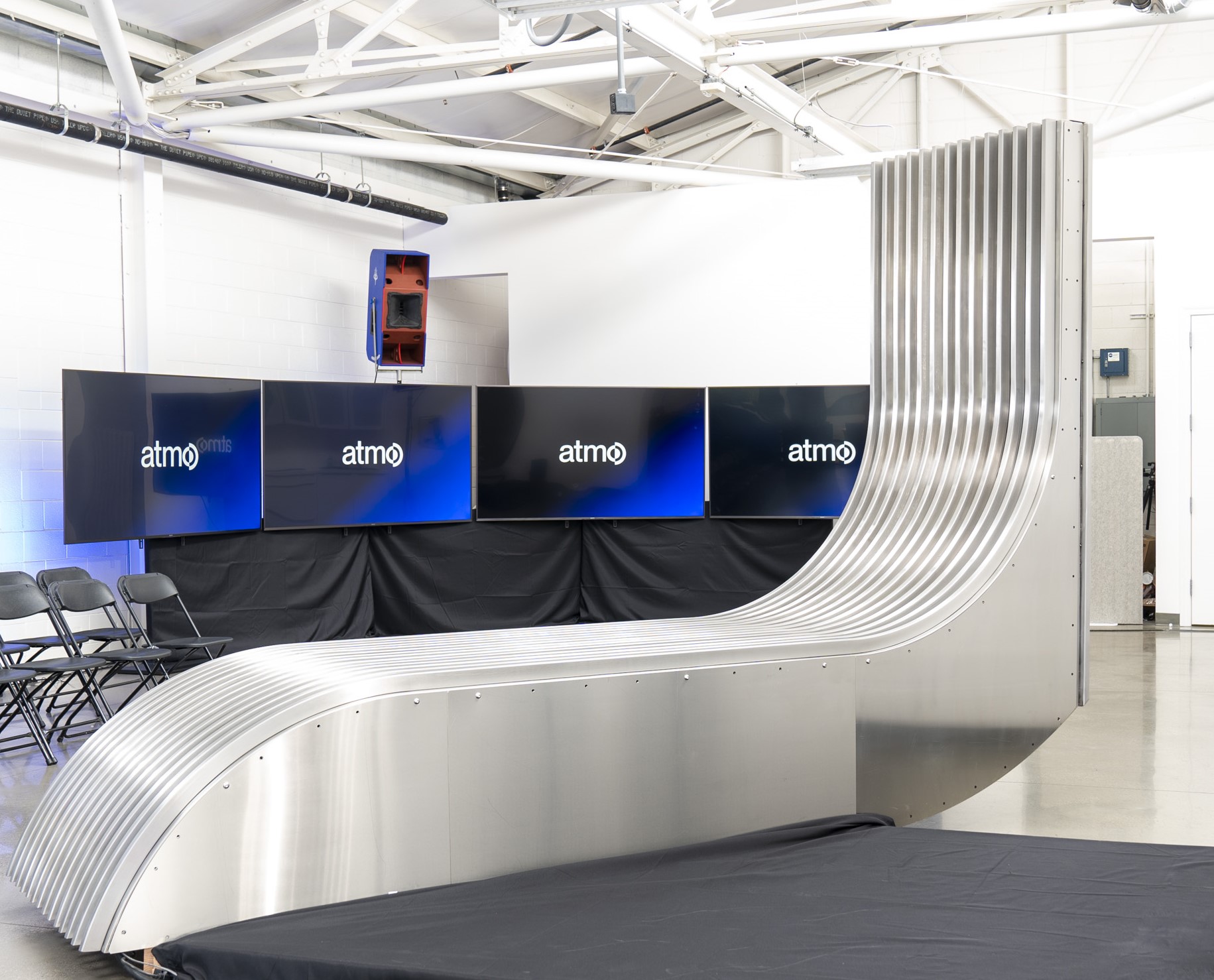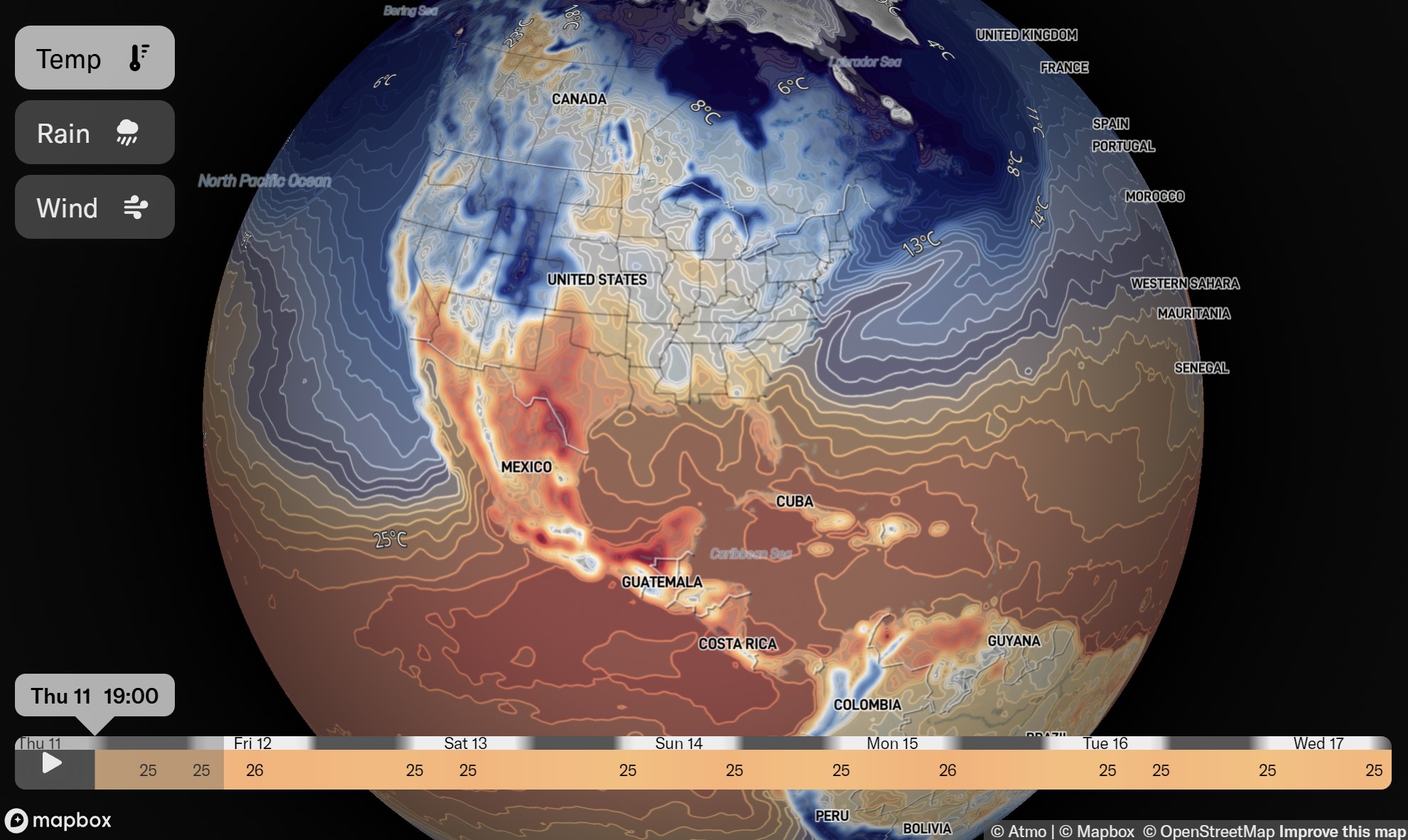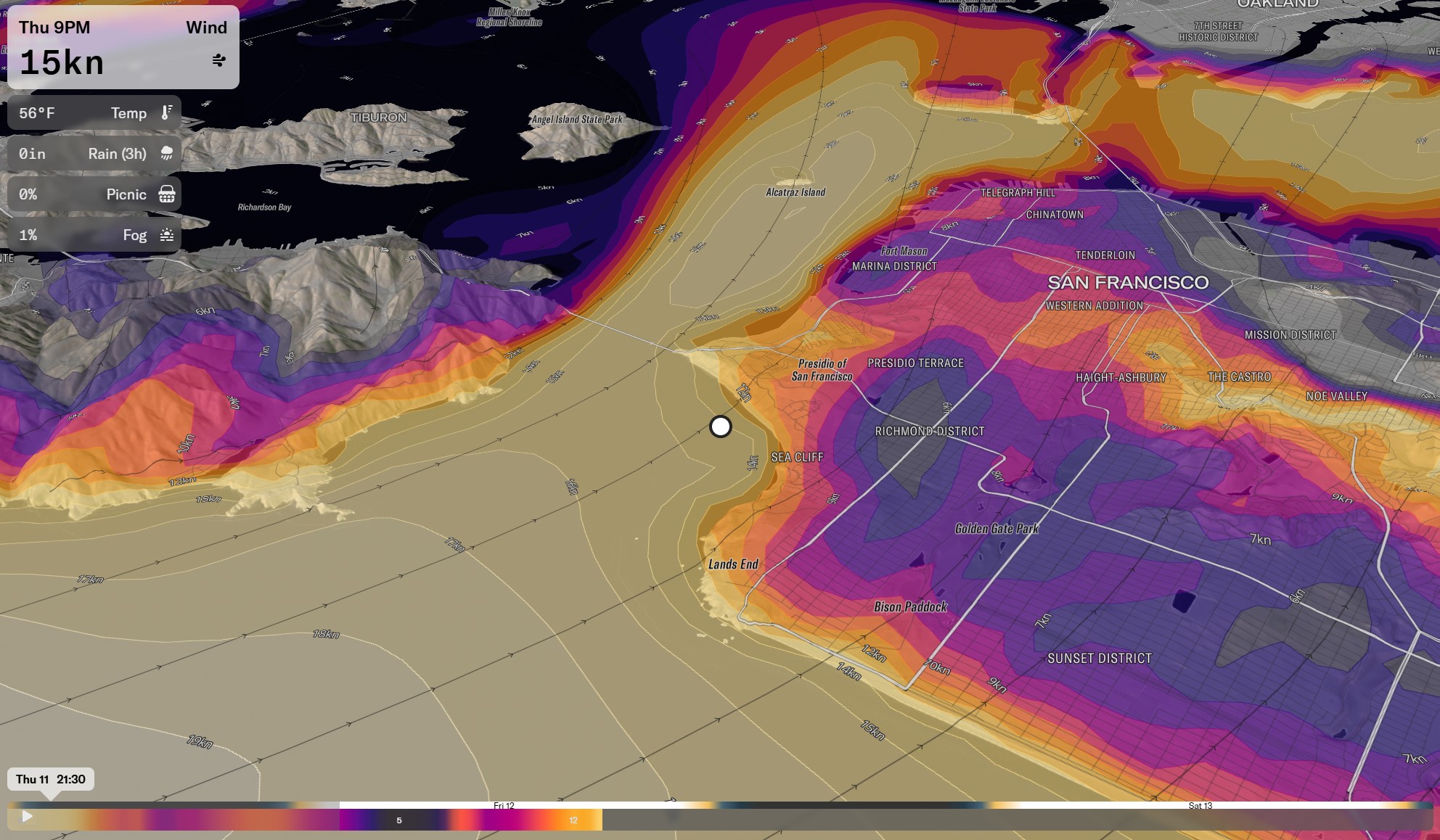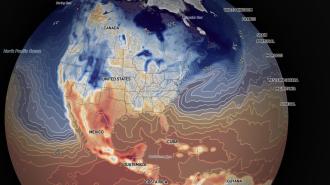In a high-tech laboratory, somewhere in San Francisco, sits a comma-shaped piece of metal that aims to change how the world sees the weather. The structure dominates the room. The horizontal part softly curves upwards until it’s taller than a person, with ridges that stretch from top to bottom. You’d be forgiven for thinking it’s a piece of modern art.
In fact, it is art, but it’s also much more than that. It’s an AI-powered, data-processing powerhouse from a startup called Atmo, and it could democratize weather forecasting, putting every country on a level meteorological playing field for the first time.

A modest start
Computing technology has revolutionized every aspect of our lives, but in the beginning, many of the first supercomputers were built to wage war, or at least ensure that the U.S. nuclear arsenal remained ready to launch a retaliatory attack that would assure the mutual destruction of any enemy.
Eventually, supercomputers found a foothold in weather forecasting, with advanced global simulations requiring their incredible processing muscle. In the decades since, they’ve grown exponentially more powerful, but their job has remained largely the same.
Atmo’s AI-based system could dramatically change that.
“Where the balance of power is, in meteorology, is shifting because of AI,” Alex Levy, Co-Found and CEO of Atmo, says.
“the balance of power is … shifting because of AI”
Alex Levy
By leveraging machine learning, Atmo — which boasts a modest team of 20 people — says its global weather forecasting is over 10,000 times more efficient and affordable than the “gold standard” in weather prediction technology today, without sacrificing accuracy.
AI overhaul
The Atmo system has been trained on several decades’ worth of global weather data, including worldwide weather monitoring from satellites and localized weather information from ground stations, totalling over 30,000 terabytes worth of data.

The company started small, using Singapore to demonstrate the system’s ability to match or exceed the most accurate legacy forecasting models. Then came Uganda, France, and Germany. Atmo recently worked with the US Air Force to provide its increasingly powerful weather predictions, and there’s more on the horizon.
The most recent development is a new global forecast model. The system allows you to browse a 3D model of the planet’s weather in real time with impressive resolution, regardless of the device.
Johan Mathe, Atmo CTO and co-founder, says that this is because of the highly-compressed, vectorized weather data used to produce it. The result is near instant rendering when moving from one area to another, and the ability to see multiple views of the same area — such as precipitation and temperature maps — side by side with virtually zero lag.
“Getting to the point where the model is rendered that fast, and can be scaled to millions of customers, was a very exciting technical feat,” Mathe says. “We worked a lot on backend infrastructure to make this map very efficient.”
In a separate demo, Levy showed off a hyper-local variant of Atmo’s forecasting model. The map was localized to San Francisco, and he pointed out the temperature differences between the cliffs facing the ocean and those facing the bay around the Golden Gate Bridge. It’s that detailed. The press of a button puts the weather into motion, forecasting many days ahead.

The Atmo system also learns over time.
As it forecasts it also monitors the results, comparing its own predictions with what really played out in the atmosphere. These comparisons allow the system to spot areas where the forecasts can be improved. By contrast, classical forecasting systems require manual adjustments to be made when a forecast doesn’t adequately predict the future.
The cost of forecast
What makes Atmo particularly exciting isn’t just that it can match or beat the “gold standard” of supercomputer weather forecasting; it’s that it can do so for a fraction of the cost.
“Classical forecasting is a fixed rule-based system that uses a set of physical rules to move quantities around the atmosphere,” Levy tells me. “It’s scientifically justifiable. The bad news is it’s so computationally intensive that to do this at a gold standard level requires multi-billion-dollar supercomputers.”
This high cost dramatically limits the number of countries that can take advantage of the best weather forecasting. Many countries simply can’t afford to invest billions in weather technology. At the same time, they recognize that more accurate and advanced forecasting tools could not only benefit the population on a day-to-day basis, but even save lives when it comes to extreme events.
The AI-based system provides an appealing and much less costly alternative.
Atmo sells its services in one of two ways. A buyer — a government entity in most cases — can choose to either purchase the hardware and have the AI-powered Atmo machine on-premises, or simply stream the data via the cloud. For countries lacking the infrastructure to support such a data stream, or have security concerns relying on a foreign supplier, the on-premises option is the perfect fit.
In either case, the cost is a small fraction of a supercomputer for the equivalent system.
A weather-copilot
It’s important to note that Atmo doesn’t suggest that its AI weather forecasting technology could or should replace weather scientists or agencies like NOAA. In fact, it’s the opposite.
“There are a lot of startups that have come and gone over the years that have had the idea that they’re going to compete against government forecasters,” Levy explains. “We’re taking a really different approach in that we only partner with and support government forecasters to make what they do better.”
By broadening access to the highest-quality weather data, Atmo could create even more opportunities for weather experts whose job it is to interpret, and distribute forecast information to people all over the world.
After all, if there’s more weather data available — and that data is more accurate and granular than it’s ever been — the demand for meteorologists to comb through that data before it ends up on your morning news report will only grow.
The only difference is their predictions could be more accurate, and cheaper.






